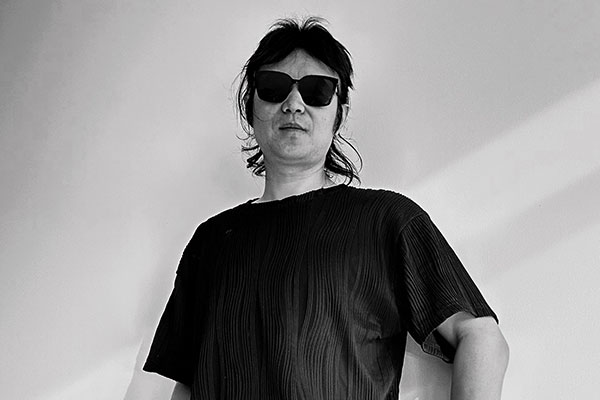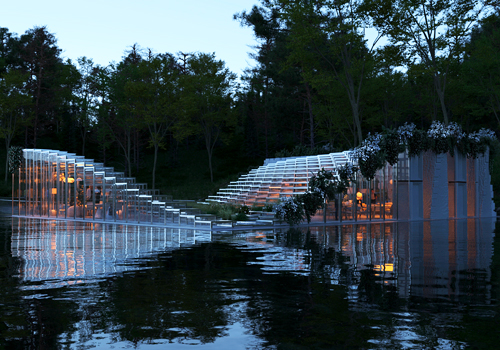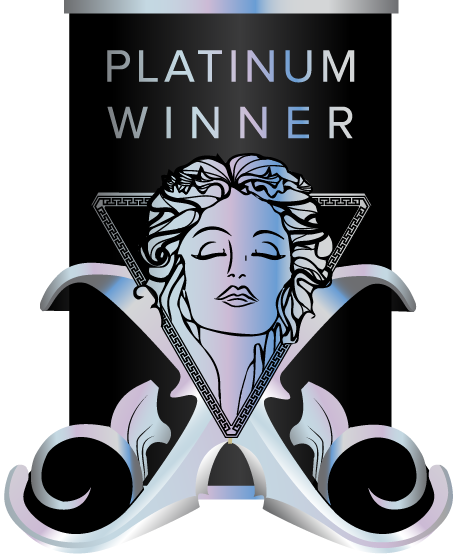
Interview
Shuai Zhang
1 Congratulations on winning the MUSE Design Awards! Can you introduce yourself and share about what inspired you to pursue design as a career?
Thank you for the congratulations! My name is Shuai Zhang, and I have dedicated nearly 10 years to the field of architectural design. During my career, I have had the opportunity to work on a wide variety of projects, including commercial, residential, and other types of developments. My passion for design began with a fascination for how spaces can transform and enhance our experiences. This interest led me to explore the endless possibilities of architectural design, where I learned that every project offers a unique challenge and a chance to innovate. I strive to create designs that are not only visually striking but also practical and responsive to the needs of those who use them. Being recognized with the MUSE Design Awards is an incredible honor—it validates my approach of blending creativity with functionality and motivates me to continue pushing boundaries in architectural design. Looking forward, I am excited to explore new ideas and to contribute even more to environments that enrich the way people live, work, and interact.
2 What does being recognized in the MUSE Design Awards mean to you?
Being recognized by the MUSE Design Awards is a profound honor that resonates deeply with my journey in architectural design. Over nearly 10 years, I have dedicated myself to exploring a myriad of project types—from commercial developments to residential spaces—each presenting its own set of challenges and creative opportunities. This award is not just a symbol of professional achievement, but a recognition of the passion, commitment, and innovation that I strive to bring to every project. It reaffirms that my approach of blending form, functionality, and aesthetic appeal truly enhances the environments in which we live and work. Being acknowledged in such a prestigious forum inspires me to continue pushing the boundaries of design and to remain committed to creating spaces that are both visually striking and deeply meaningful.
3 How has this achievement impacted your career, team, or agency, and what opportunities has it brought so far?
This achievement has profoundly impacted my career and has had a positive ripple effect throughout my team and agency. Here are some key ways in which the MUSE Design Awards recognition has influenced our work: Enhanced Reputation: The award has boosted our credibility within the industry, affirming our commitment to high-quality, innovative design. It has served as a powerful endorsement of the hard work and creativity that my team and I bring to each project. New Opportunities: With increased visibility, we have attracted attention from prestigious clients and institutions. This recognition has led to invitations to participate in collaborations and high-profile projects, spanning both commercial and residential sectors, that we might not have accessed otherwise. Team Empowerment: The award not only validates my personal contributions but also highlights the collective effort of our entire team. It has motivated us to push the boundaries of our work, encouraging innovative approaches and the exploration of new ideas, which in turn strengthens our collaborative spirit. Agency Growth: For our agency, winning such a recognized accolade reinforces our market positioning. It inspires confidence both internally and externally, contributing to a surge in new project inquiries and partnership opportunities as more stakeholders recognize the excellence in our work. In summary, this achievement has been a catalyst for professional growth, fostering a culture of continuous innovation and excellence within our team and agency. It’s a milestone that encourages us to keep challenging ourselves and to deliver design solutions that truly resonate with our clients and users.
4 What role does experimentation play in your creative process? Can you share an example?
Experimentation is at the heart of my creative process—it allows me to push boundaries and explore unconventional solutions that might otherwise remain undiscovered. I see each project as an opportunity to challenge traditional norms and experiment with new materials, forms, and techniques. By embracing a trial-and-error approach, I can refine concepts, discover innovative design pathways, and tailor solutions that are both functional and aesthetically distinct. For example, in one of my commercial projects, I ventured into an experimental phase by integrating a combination of traditional materials with modern, sustainable elements. I began by developing a series of digital models complemented by physical prototypes to test various façade treatments. This hands-on exploration helped me understand the interplay between light, texture, and structure while ensuring that the design met practical performance criteria. The experimental process revealed a unique aesthetic that not only enhanced the building's visual appeal but also improved its energy efficiency and environmental responsiveness. This example underscores that experimentation isn't just about taking risks—it's about continuously learning and evolving, turning challenges into opportunities for creative breakthroughs.
5 What's the most unusual source of inspiration you've ever drawn from for a project?
One of the most unusual sources of inspiration I’ve ever drawn from was the leaves on a tree. At first, it might seem unrelated to architecture, but I was captivated by the way the leaves flutter in the wind, their dynamic movement, and the way they offer both shade and light depending on the time of day. I translated this natural concept into a façade design for a residential building, using a series of adjustable panels that mimic the movement of leaves. This allowed residents to control sunlight and privacy while adding a natural, organic element to the architecture, creating a sense of harmony with nature.
6 What’s one thing you wish more people understood about the design process?
One thing I wish more people understood about the design process is that it’s not just about creating something visually appealing—it’s about solving problems and meeting the needs of the people who will use the space. A lot of time and effort goes into understanding the context, the functionality, and the experience the design will create. Each decision, from materials to layout, is made to ensure the design is both beautiful and practical. It’s a balance of creativity and functionality, and sometimes, the best designs come from the most thoughtful, user-centered approaches.
7 How do you navigate the balance between meeting client expectations and staying true to your ideas?
Navigating the balance between meeting client expectations and staying true to my own design ideas can be a delicate process. I believe communication is key. From the very beginning of a project, I make sure to have a clear understanding of the client’s goals, preferences, and needs. This allows me to align my design approach with their vision while still incorporating my creative perspective. Throughout the process, I maintain an open dialogue, ensuring that I am addressing their concerns while gently guiding them towards innovative solutions that stay true to the core of the project. It’s a collaborative effort, and finding that balance requires flexibility, trust, and mutual respect.
8 What were the challenges you faced while working on your award-winning design, and how did you overcome them?
The biggest challenge I faced while working on my award-winning design was striking the right balance between aesthetics and functionality, especially when working with innovative materials and techniques. In this particular project, I wanted to create a design that was not only visually striking but also practical and sustainable. This meant considering factors like structural integrity, environmental impact, and the user experience—all while pushing the boundaries of design. To overcome these challenges, I carefully tested and refined every aspect of the design myself. I conducted multiple iterations and experiments to refine the materials and construction methods, ensuring that each decision was backed by thorough research and practical testing. Through persistent problem-solving and a focus on detail, I was able to create a design that fulfilled both creative and functional goals.
9 How do you recharge your creativity when you hit a creative block?
When I hit a creative block, I find that stepping away from the project for a little while helps to recharge my creativity. Whether it's taking a walk, exploring new places, or even looking at different art forms—such as photography, nature, or sculpture—these experiences help refresh my perspective. I also find that engaging in other forms of creativity, like sketching freely or experimenting with new techniques, can often spark new ideas. It’s important to give myself permission to pause and not force the creativity, as sometimes the best ideas come when I’m not actively trying to solve a problem.
10 What personal values or experiences do you infuse into your designs?
In my designs, I infuse personal values such as authenticity, sustainability, and the importance of human connection. I believe that a well-designed space should not only look beautiful but also feel meaningful and responsive to its users. This stems from my own experiences of being deeply influenced by the environments I’ve lived and worked in—spaces that have fostered a sense of belonging and connection to the surrounding world. Sustainability is another core value I bring into my work, as I strive to create designs that are not only functional but also respectful of the environment. This commitment to sustainability is influenced by my personal belief in the importance of preserving our natural resources for future generations. By integrating these values into my designs, I aim to create spaces that are both visually inspiring and socially responsible.
11 What is an advice that you would you give to aspiring designers aiming for success?
My advice to aspiring designers is to always remain curious and never stop learning. Design is an evolving field, and staying open to new ideas, techniques, and perspectives is crucial for growth. Don’t be afraid to take risks and experiment with your ideas, as that’s often where the most innovation happens. At the same time, don’t lose sight of the fundamentals—understand the context, functionality, and purpose of your designs. Building strong relationships and networks within the industry is also vital. Surround yourself with a supportive community of mentors, peers, and collaborators who challenge you to grow and offer constructive feedback. Lastly, be patient with yourself. Success in design takes time, persistence, and a continuous commitment to honing your craft.
12 If you could collaborate with any designer, past or present, who would it be and why?
If I could collaborate with any designer, past or present, it would be Thomas Heatherwick. His ability to blend art, architecture, and design in a way that feels both inventive and human-centered is something I greatly admire. I am inspired by how he transforms ordinary spaces into extraordinary experiences, often by using unexpected materials and innovative forms. His designs are not only visually striking but also deeply thoughtful in their functionality and relationship to the environment. Working with him would be a chance to explore new ways of thinking about space and form, pushing the boundaries of design in a meaningful and impactful way.
13 What's one question you wish people would ask you about your work, and what's your answer?
One question I wish people would ask me about my work is, "How do you ensure that your designs are both innovative and socially responsible?" My answer would be that I believe great design should balance creativity with a deep sense of responsibility to the community and the environment. I take the time to understand the social context of each project, considering how it can positively impact the people who will use the space. I also prioritize sustainability, selecting materials and processes that are eco-friendly and durable. Innovation, for me, isn’t just about aesthetics or pushing boundaries, but also about creating designs that serve a larger purpose and contribute to a better future.

